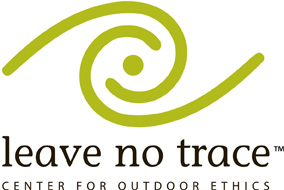5. Rocks and Cairns
Hiking along nature trails may require an ability to read the language of the trail. Trail markers such as rocks, logs and sticks can guide hikers to the right direction when faced with a fork in the way, allowing them to continue on the main path or detour to shelter or side routes. Cairns, arranged piles of stones, serve as trail markers in state parks and national parks. They mark open areas such as elevated trails where no trees are present. Hikers in some cases may like to leave a mark and arrange stone piles on trails that they have traveled.4. Logs and Sticks
Crossed logs can signify a personal message of
one hiking group to another or carry sacred meeting. Sticks
may serve as directional guides. Native American tribes used broken
twig or branches and sticks to mark trails. For example, a broken twig
laid on the ground can signal a turn on the trail.
3. Tree Marks
Hikers can easily see and
interpret blazes on
the trunks of trees. Types of blazes include paint, affixed signs or axe
blazes. The 2,144-mile Appalachian Trail that runs from Mount Katahdin,
Maine to Springer Mountain, Georgia, is marked by diamond-shaped metal
blazes
to direct hikers along the route. Other tree markers for the
Appalachian Trail include painted vertical, rectangular white blazes.
Side trails are signaled by blue blazes, which lead to shelters and
scenic viewpoints
2. .Leave No Trace

• Choose not to cook over a fire, it is difficult to avoid getting food in the fire ring. Never burn trash and food scraps. Doing so disseminates the food smell and attracts bears. Residues from food and trash will not burn completely and linger long after you are gone creating problems for other campers.
• Camp in areas that have already been impacted by use.
• Keep your group small to maintain an atmosphere that is appropriate for the backcountry. Large groups tend to attain a level of social interaction and noise that is not congruent with backcountry ethics or values.
• Never cut switchbacks. This is a destructive practice that creates erosion and worsens trail conditions.
• Pack out whatever you pack in. Never leave any food, trash, personal items or equipment.
• Dispose of human waste properly.
• Do not bury any trash, including organic items.
• Human Waste Disposal
• Dig a "cathole" at least six inches deep.
• Deposit human waste in the hole, throw in a small handful of leaves or duff and cover the hole.
• Keep at least 100 feet away from camp, trails or any water source.
• Never go behind a shelter or near a spring, as this creates unhealthful conditions and may results in closures of campsites or shelters.
• Sanitary pads and tampons must be packed out of the backcountry.
• Never deposit any trash including wipes, sanitary pads or tampons in backcountry privies. These items interfere with the composting process which makes the privy smell very bad. Ultimately these items must be dug out of the privy by hand. So do the right thing and pack these items out!
1. WHEN PLANNING YOUR NEXT BACKPACKING TRIP... EXPECT THE UNEXPECTED!
When planning a trip, people usually plan them to have fun and for the enjoyment. The following are some tips to planning an enjoyable trip for everyone involved:
* Make sure your plan can be modified during the trip. All sorts of factors may arise and require a change in the itinerary. Some of the factors included bad weather, changing trail conditions, broken equipment, ill-prepared participants, injuries and shortage of food / water through poor preparation.
* Don't plan long or difficult hikes on every day of the trip. Vary the mileage so that you have some days when you can get a later start or get to camp early.
* On longer trips, schedule a rest day every five to seven days.
* Make sure that people have some time during each day to kick back - to read, watch the sunset, write, etc.
* When hiking at high altitudes, people acclimatize at different rates. You may have to adjust your trip to give people time to properly acclimatize before going higher, especially if people are coming straight from sea level to a high altitude.
per "The Backpacker's Field Manual" by Rick Curtis

No comments:
Post a Comment